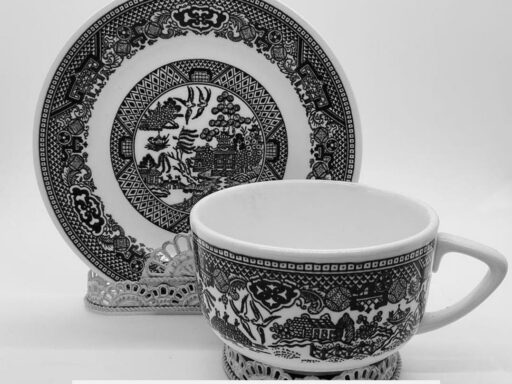Wooden shields were common, but wooden body armor was never widely implemented due to wood’s mechanical limitations, practicality issues, and the superior functionality of shields and metal armor.

Historically, wooden armor did exist but mostly in limited and specialized forms. Some indigenous groups, such as Siberian, Alaskan natives, and Northern Native American tribes, employed wooden or wood-derived scale and lamellar armor. For example, the Aleut people of Alaska crafted wooden armor, and Pacific Northwest natives fashioned red cedar plate armor and wooden helmets. These armors often involved interlocking slats or composite materials like wood combined with leather and other natural fibers. The rattan armor from ancient China, soaked in water and coated with tung oil, could resist arrows and sword blows but suffered from flammability.
Despite these examples, wooden body armor remained rare compared to wooden shields. The fundamental reason lies in wood’s mechanical properties. Wood tends to fail catastrophically under stress: it cracks, splits, or breaks suddenly rather than bending or denting. This differs greatly from metal, which deforms but maintains structural integrity after impact. Such catastrophic failure makes wooden armor unreliable, especially when worn on the body where movement and durability are critical.

Crafting wooden body armor posed significant challenges. Effective protection against arrows and swords demanded thick wooden plates, which added bulk and weight. Such armor would be heavy and stiff, limiting the wearer’s mobility. Flexibility and ease of movement are crucial in combat, and wooden plates rarely allowed this. Designing armor for limbs that permits fighting maneuvers increased complexity because wood has limited elasticity. As a result, wooden armor would often hinder combat effectiveness.
By contrast, wooden shields were simpler to produce, repair, and replace. Their portability and versatility made them highly practical. A shield can be maneuvered dynamically for defense, used offensively to strike, and dropped or exchanged easily. Shields offer comparable protection to body armor in many situations because they can be repositioned to block attacks selectively, reducing the need for continuous full-body coverage. Additionally, shields do not restrict movement nearly as much as bulky armor.

Furthermore, when wealth or resources allowed, metal armor replaced wooden body armor almost universally. Metal provided far better protection, maintained durability through impacts by deforming rather than breaking, and could be repaired. Even the wealthiest warriors chose metal armors due to these advantages, leaving wooden armor as a less attractive option.
Some cultural exceptions exist, especially in the North Pacific Polynesian regions. There, finely crafted wooden helmets and armor integrated natural materials—feathers, cane, coconut fiber, and even human hair—for ceremonial or specific combat roles. These examples show wooden body armor was possible but remained a specialized practice rather than widespread military standard.

| Key Factors Limiting Wooden Body Armor | Description |
|---|---|
| Mechanical Failure | Wood breaks suddenly; metal dents and bends. |
| Weight and Bulk | Thick wood needed for protection causes heaviness. |
| Mobility | Rigid wooden plates reduce fighting agility. |
| Crafting Complexity | Hard to create well-fitting, effective armor from wood. |
| Shield Versatility | Shields are lighter, easier to use and replace. |
| Metal Superiority | Preferred when available for superior defense. |
The balance of these factors explains the historical preference for wooden shields over wooden body armor. Shields offered nearly equal protection with greater flexibility and lower cost. Metal armor technology eventually supplanted wooden body armor in advanced military contexts. Thus, wooden body armor never reached large-scale use beyond regional or limited cultural examples.
- Wood armor existed in some cultures but lacked broad military use.
- Wood’s brittle failure made reliable body armor impractical.
- Heavy, bulky wooden plates impaired battlefield mobility.
- Wooden shields were lightweight, versatile, and easier to produce.
- Metal armor provided better durability and repair options.
- Cultural exceptions show possible but niche application of wooden armor.
Wooden Shields Were Common, So Why Was Wooden Body Armor Never Implemented on Such a Scale?
Wooden body armor was never widely adopted because wood’s mechanical nature, weight, and crafting challenges made it impractical compared to metal armor and wooden shields. Let’s explore why wooden shields thrived while full body armor made from wood remained rare and limited.
Wooden shields are everywhere in history, from the Roman scutum alternatives to medieval bucklers and tribal defenses. But when it comes to wooden armor worn on the body, history is a bit quieter. Why is that?
The History of Wood in Armor: Not a Total Stranger
First, don’t think wood was completely absent from armor. In fact, wooden or wood-based scale and lamellar armor did exist. Natives of Siberia and Alaska crafted lamellar armor made from wood and bone. The Aleut tribe, for example, made use of wood in their defensive gear. Native American groups in the northern United States adopted bark and wood armor as well.
In ancient China, something curious existed: rattan armor. They soaked rattan wood in water and oil, dried it repeatedly, and coated it with Tung oil. This armor could reportedly withstand swords, arrows, and even blows from big rocks. The famous historical novel, Romance of the Three Kingdoms, mentions its near-impenetrability, although with a notable downside—flammability.
Even Pacific Northwest natives crafted red cedar plate armor and helmets. These were beautiful, functional pieces, often combined with leather and paint, hinting at a rich tradition of wooden defensive craftsmanship. Helmets could be made by bending wood, creating visors, and blending wood with other materials.
Mechanical Realities: Why Wood Fails as Armor
Here is the kicker: wood’s mechanical properties work against it as armor. Metal armor dents and bends under stress, absorbing damage while maintaining some protection. Wood? When it fails, it usually breaks catastrophically—splintering and cracking sharply.
This is quite important. Wooden shields often engaged in singular blows and could be replaced if broken. However, wooden body armor had to provide reliable, lasting protection and fit well. A single catastrophic failure mid-fight could be deadly.
Plus, wooden armor had to be thick enough to stop arrows or sword strikes. This thickness created bulk and weight, making it cumbersome to wear. Where metal armor could be formed into relatively thin yet tough plates, wood had to compensate with mass. That slowed down a warrior terribly.
Shields vs. Armor: Which One Wins and Why?
Consider the difference between a shield and a piece of armor on the chest. A shield is versatile. You can use it to block, bash, or even throw. You can remove it quickly if needed. Wooden shields work thanks to their portability and ability to block attacks from many angles.
Wooden body armor, on the other hand, is stuck on your body. It encumbers your movements, weighs you down, and when it breaks, you have fewer options. The added weight reduces mobility—often a crucial factor in battle. A soldier carrying just a wooden shield can maneuver almost as effectively as one with both shield and wooden body armor but at a much lower weight cost.
Practical Challenges in Crafting and Wearing Wooden Armor
Crafting wooden armor was not a simple task either. The material needed treatment—like soaking or oiling—to increase flexibility and strength. Even so, making armor for limbs that allows free movement remains a nightmare. Joints, bending areas, and flexibility are a carpenter’s nightmare in armor form.
Additionally, wooden armor had to fit properly to be effective. Shields don’t rely much on tailoring. Wooden body armor requires precise fitting to avoid chafing and maintain protection. This increases crafting time and costs. It’s a huge deterrent, especially when metal armor was available to the wealthy and more durable.
Exceptions: When Wooden Armor Finds Its Niche
Interestingly, some cultures mastered wooden body armor, embracing its unique qualities. Northern Pacific Polynesian groups excelled at creating wooden armor and helmets combined with cane, feathers, and human hair. Hawaiian feathered helmets are notable examples. Kiribati warriors used armor made partly from coconut fiber and hair in ceremonial duels.
These exceptions showcase the ingenuity of cultures that adapted wood for body protection by blending materials and addressing deficiencies in creative ways.
In Summary: Why Wooden Body Armor Never Went Mainstream
- Wood fails catastrophically when damaged—unlike metal, which dent but remains protective.
- Effective wood armor needs to be thick and heavy, hurting mobility.
- Shields made of wood provide flexible, easy-to-use defense and can double as weapons.
- Crafting well-fitting wooden armor is complex and resource-intensive.
- Metal armor offers durability, repairability, and better long-term protection.
- Hence, wooden shields were preferred and wooden body armor remained limited to niche cultural usages.
So, the next time you see a warrior in shining metal armor with a wooden shield, you know why the wooden full-body armor wasn’t quite a thing. Shields, with their practicality and versatility, outshined wooden body armor that made warriors weigh down and risk catastrophic breakage. Wood likes to shine in defense, but it’s best left as a shield rather than a full suit!




